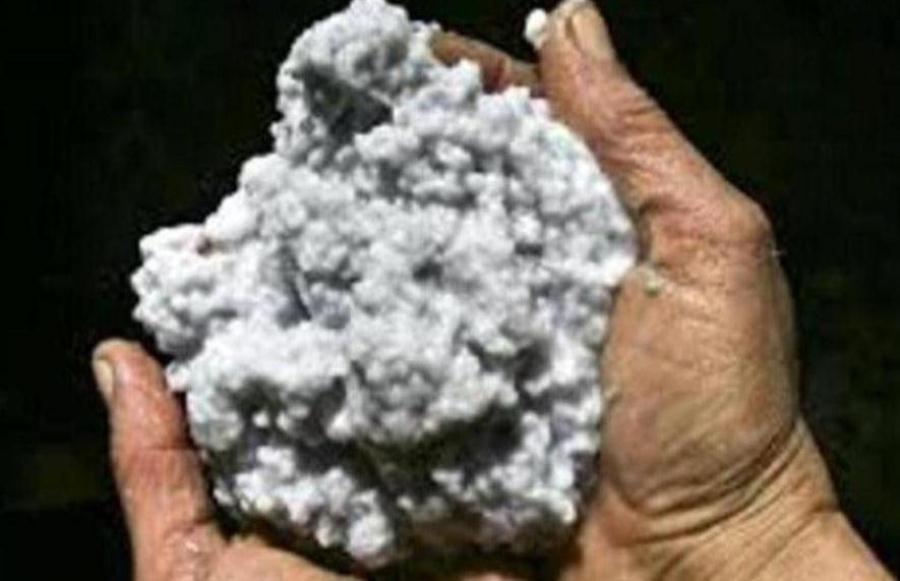Cellulose is the most abundant of all naturally occurring organic matter and probably makes up at least a third of the vegetable matter in the world. This universal plant substance is aptly called the botanical skeleton since it occupies this role in the fibrous cell. Produced by photosynthesis in green plants, it is estimated that a few billion tons are synthesized yearly throughout the world.

Although it occurs in the lower plant life, such as mosses, algae, fungi, and even some bacteria, the source of commercial cellulose is the higher plant life which supplies an annual world consumption of about 58 million tons of fibrous raw material. Of this amount, 45 million tons, derived mostly from pulped wood, is used for paper; about 8 million tons, mostly from cotton, goes into textiles; and 3 million tons is chemical grade cellulose.
Still more impressive is the fact that some 750,000,000 tons of wood (50% cellulose) is consumed yearly for fuel and lumber. In mentioning these uses, however, no account has been taken of the billions of tons of raw cellulose eaten as fodder by cattle and other animals, or of cellulosic material which we ourselves consume in grasses, vegetables, and fruits.
The amount of cellulose in different species of plants varies greatly. Never found alone, it is always associated with many other plant substances. The fibrous seed hair of the cotton plant is about 90% cel-lulose. Wood is about half cellulose, averaging from 40 to 50% according to wood type.In flax and jute the long, usable fibers, which after purification are almost pure cellulose, constitute no more than 30% of the stem. The grasses, cereal straws, ramie, bamboo, and sugar cane (bagasse) are all, like flax and jute, ap-proximately one third cellulose.
When the highly specialized botanic products, such as rosin and turpentine, the alkaloids, and tannins are omitted, the most important substances associated with cellulose in nature are bark, lignin, and the hemi-celluloses. The latter two, aptly referred to as cel-lulose encrustants since they occur in the interstices of the fibrillar cell wall, constitute about 30-60% of most plant material.
Bark and lignin are still imperfectly characterized, though many useful organic chemicals can be isolated from them. It is to he hoped that re-search will some day unlock this treasure chest of organic chemicals to allow the rise of a self-renewing silvichemical industry to rival the nonpermanent petrochemicals. Meanwhile, lignin, bark, and the hemicelluloses constitute the great waste products and waste-disposal problems of the wood cellulose industry.
The hemicelluloses, chemical relatives of cellulose, are made up of hexose and pentose sugars. They are the chief impurity of chemical grade cellulose, of which nearly 90% is derived from wood. The degree of purity of these “dissolving” pulps is measured by their “a-cellulose” content which varies from 89 to 98%.
The replacement of chemical cotton, 98-99% a-cellulose, by wood pulp is one of the interesting raw material sagas of modern industry. 1Vith the growth of the rayon industry in the 20’s and 30’s, the supply shortage and price instability of cotton linters forced rayon producers to use increasing amounts of wood pulp.
Today only about 10-15% of the raw materials in the chemical cellulose industry is from linters. The growth of the pulp industry in the southern United States, where the “harvest” of an acre of pine trees after seven years’ growth produces five times as much cellulose as the equivalent cotton crops, promises to maintain this situation.
10 General Characters Of Cellulose
Chemically, cellulose is defined as a linear polysac-charide made up of fl-anhydroglucose units. Tech-nically, the term is used rather loosely to include the various fibrous products that are predominantly cel-lulose but contain varying amounts of contaminants (hemicelluloses, lignin, resins, etc.). Whether or not these contaminants, especially the hemicelluloses and lignin, are actually linked chemically to the pure cel-lulose is still an open question. So far the cellulose from the cottonseed is the only one which by suitable treatment has been isolated as an almost pure poly-glucose.
It is difficult to discuss the physical and chemical properties of cellulose separately. By virtue of its chain-like structure, cellulose tends to crystallize in long parallel bundles or strings, which in turn build up a superstructure by parallel alignment. The fibrillar strings provide physical rigidity to the cell wall but at the same time confer on the cellulose a very strong resistance to chemical attack.
It is in fact found that, although cellulose undergoes all the reactions characteristic of glucose, the extent and rate of reaction are determined by the perfection and regularity of the i crystalline strings. In the untreated fiber the cellulose incrustants occur as amorphous material filling i the spaces of the “superlattice.”
They are either adsorbed or chemically bound to the cellulose strings i and interlaced with each other so that they are much 1 more susceptible to chemical attack than the cellulose.
The hemicelluloses are basically polysac-charides made up of different pentose (xylose, arabi-nose, and rhamnose) and hexose sugars (glucose, mannose, and galactose) and uronic acids. They are frequently branched which accounts for their poor crystallization properties. Many types of hemicel-lulose have been isolated and each plant species seems to contain several.
These substances are more easily hydrolyzed than cellulose and are alkali soluble. These two properties are used commercially to separate hemicellulose from cellulose.
